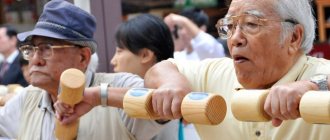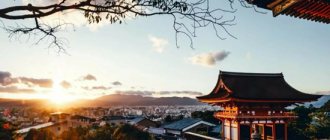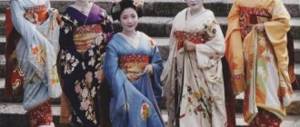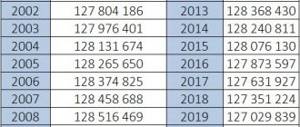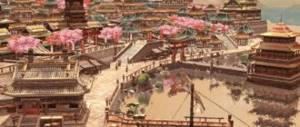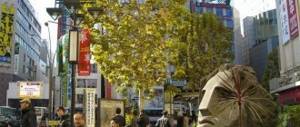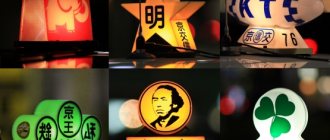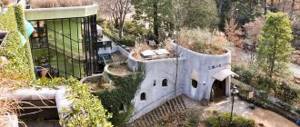Tokyo is the capital of Japan and the largest of its cities. Hundreds of thousands of tourists from different countries come here every year. And in 2020, the Summer Olympic Games will be held in Tokyo, which is why the whole world's attention will be focused on the city.
Distinctive features of Tokyo are also its powerful economy (the largest city in the world) and technology. People who have been here note that the city is ahead of its time and represents a real metropolis of the future. It is quite possible that robots will be introduced everywhere in the near future, capable of replacing cashiers, bank employees and representatives of other professions.
Geographical location and climate
The city of Tokyo is located in the southeastern part of one of the country's largest islands - Honshu, on the Kanto Plain and on the shores of Tokyo Bay.
The city has a subtropical monsoon climate. Winter is dry, there is practically no precipitation, snow in the cold season is an isolated phenomenon. The average air temperature is from +7°C to +11°C.
Summer in the city begins in May and ends in early November. The season is very hot and muggy due to high humidity, with high rainfall. The average air temperature is from +26°C to +31°C.
The hottest month is August (daytime +31°C, night +24°C), the coldest month is January (daytime +7°C, night +4°C).
Typhoons often occur in Tokyo. Most of them are weak. Basically, the peak of such phenomena is recorded in August and September.
Administrative division
The fantastically expanded policy is a prefecture, it includes:
- 23 administrative districts - headed by a mayor and council;
- 26 settlements;
- county;
- 4 districts.
The villages around the city are called “Western Tokyo”; many citizens moved here to find peace away from the noisy and overpopulated metropolis.
The governor is the elected head and governs together with the assembly. He is in charge of the territory of the metropolis and remote islands.
All government institutions of the country are located in the center, and the residence of the emperor is also located here.
How can I get to Tokyo?
There are daily direct flights from Moscow from Aeroflot. Two-way tickets cost approximately $650. The flight duration is 10 hours.
There are no direct flights from St. Petersburg, but you can also get there by Aeroflot with a transfer in the capital. The journey should take about 14 hours. Ticket prices start from $350 one way.
There are air flights from Khabarovsk (2 times a week) and Vladivostok (3 times a week). The flight duration is 2.5 hours. Prices start at $200 one way.
The exact flight schedule and current prices should be found on the airlines' websites or on the website www.aviasales.ru.
Statue of Liberty
Tokyo has its own Statue of Liberty. The same as in New York and Paris. It is installed against the backdrop of the Rainbow Bridge.
If you are not yet completely tired of walking, then on the way back from the island you should get off at Shiodome Station, this is where Miyazaki’s magic clock is located. In summer the last bell is at 22:00, in winter - at 20:00. Do not miss.
A Brief History of Tokyo
The history of the Japanese capital began in the 12th century with a fishing village called Edo, which was located on the site of modern Tokyo. Towards the end of the century, the village had fortifications, which were used as moats and walls, and a castle was built inside. Fragments of fortifications and some estates can still be seen today in almost their original form.
Modern view of once-built ancient fortifications
At the beginning of the 18th century, Edo was one of the largest cities in the country with a population of about 1 million people. Already in 1868, the former village became the capital of Japan and was renamed Tokyo (translated from Japanese as “Eastern Capital”).
When developing infrastructure, priority was given to railway communications. At the beginning of the last century, the city developed a network of water canals, through which they began to distribute various goods to warehouses, piers and factories. The city developed rapidly, and already in the 20s the population reached more than 3.7 million inhabitants.
Tokyo's history also includes some disasters, including the Kanto earthquake and World War II. However, the city managed to gradually recover and today is one of the largest metropolitan areas in the world with a population of more than 13.5 million.
There are virtually no traditional signs for restrooms in the city, so you need to look for “男” for men and “女” for women.
Economy
The largest economic center of life in the country and the world. Division by sectors:
- Industrial production. Until 1950, the policy held the lead in terms of production volume; by 1995 it dropped to fourth. The administration, in order to improve the environment, began to move factories beyond the residential sector. The main industry is mechanical engineering (high-tech devices), light industry.
- Tertiary sector. Financial center of the world economy. The central offices of investment and insurance companies and the Stock Exchange are located. The headquarters of the main industry giants have moved from Osaka.
- The primary sector is not developed - fishing has stopped due to pollution of coastal waters, several thousand people work in agriculture.
More than half a million are employed in the transport sector.
Transport system
Tokyo has a well-developed transport system. It is one of the most advanced in the world. Each district and block has a large number of stations and stops within walking distance from home or public establishment. All names are additionally duplicated in English.
Metro
The Tokyo Metro has about 300 stations and 13 main lines. There are also JR lines and private branches. There are different tickets from private carriers and state companies.
In Tokyo, there are specially trained employees - oshio - who push passengers into cars during rush hour.
Tourists who are in the city for the first time are recommended to use the JR Yamate circular line. It covers the city center and has connections with almost all important lines. The city's metro has its own website, where you can get the desired route, check the schedule and find out the exact fare. The metro operates from 6:00 to midnight.
The carriages are quite cool due to air conditioning, so tourists are advised to wear light windbreakers.
The fare depends on the distance and ranges from 170 to 310 Japanese yen (JPY). Tokyo also has a monorail, where the minimum fare is 150 JPY.
Shinkansen
These are high-speed bullet trains that are convenient for traveling to the suburbs of the capital. There are special smoking rooms on trains. Conductors serve drinks and snacks in the carriages. The speed of the train is 300 km/h. Tickets can be purchased at the station or through a special machine at Ticketoffice (green sign). Tickets are available with or without seats.
You must keep your ticket for the entire trip, as you must present it to the ticket inspectors or at the turnstiles when exiting.
Prices for such a trip start from 5 thousand JPY and depend on the distance.
Buses
The main purpose of buses in the Japanese capital is to connect various subway stations. Most routes are private. This transport often runs short distances.
Buses run from 7:00 am to 9:00 pm. Single travel – from 200 JPY. You must pay your fare at the exit.
Trams
Tram transport appeared in Tokyo at the beginning of the 20th century and developed rapidly. But already in the middle of the century, preference began to be given to the metro and buses. Over time, only one tram line remained, called Arakawa.
The route passes through the old quarters of the city. A distance of 12.5 km can be covered in 50 minutes. There are 30 stations on the route. The ticket price is 170 JPY. The tram passes very close to the residential buildings of the townspeople.
Travel tickets
Visiting tourists can buy a day pass at Tokyo Airport. It costs 700 JPY and allows unlimited travel on the tram, buses and subway of a state-owned company called “Toei”. You can also purchase a private metro pass separately. Price per day - 800 JPY, for 2 - 1200 JPY.
Since there are several companies from which travel passes are purchased separately, tourists are recommended to use the PASMO transport card (https://www.pasmo.co.jp/en/) in electronic form. It makes traveling on public transport much easier.
Bicycle rental
There are many bike paths in Tokyo, but lovers of this means of transport should take into account that the city is located on hilly terrain, and there is also a very dense flow of cyclists. Therefore, beginners are not recommended to use such transport.
You can often find rental offers in hostels and mini-hotels (cost 500-800 JPY per day). In tourist spots, rent is often 2 or even 3 times more expensive.
Taxi
This transport can be used to get to any point in Tokyo, but long distances and traffic jams significantly reduce the speed of movement.
The cost of the trip starts from 650 JPY for the first 2 km, and each subsequent one is already 300 JPY. At night, the cost increases by about 30%.
Rent a Car
The Geneva Convention applies in Japan, so you won’t be able to drive here with a Russian international license. To rent a car, you need to make a Japanese translation of the license and pass traffic rules, driving exams, and also have your eyesight tested.
If you have a license, car rental prices start at 7,000 JPY. A liter of gasoline costs about 150 JPY.
There is very little parking in Tokyo; an hour costs between 400 and 1000 JPY. There are also many toll routes, for example, the road from the center to the airport will cost 3000 JPY.
In the capital, traffic is on the left, and road signs are in the state language.
Tsukiji Fish Market
The Tsukiji Fish Market resembles a natural science museum. Japan is so rich in seafood that sometimes you forget that this is not the seabed, but shopping arcades. More than 400 species of marine life can be found on the shelves.
Daily trade turnover reaches 2 thousand tons of fish and seafood. The market is located almost in the city center. His day begins at 4 a.m., when a bustling movement of workers fills the area with shouts and laughter. The most impressive spectacle is the tuna auction, which starts at 5 am. Huge carcasses of the freshest fish are sold and bought by connoisseurs in a few minutes. And when the first employees appear in the offices, the fish market is already finishing its working day. The external part of the market operates in a completely different mode. It welcomes guests with a variety of goods and a calmer rhythm of existence. Here you can try many local dishes in small cafes and restaurants.
0 0 votes
Vote for the article!
Hotels and accommodation in Tokyo
The city provides many different accommodation options to suit every taste and financial capabilities.
Hotels
The most luxurious hotels are located in Akasaka and Shinjuku. Here room prices start from 57,000 JPY per night.
Popular hotels:
- Shangri-La Tokyo. This 5 star hotel is located in Marunouchi Trust Tower on the upper floors. Here visitors can admire a beautiful view of the city. The rooms have everything you need for a comfortable stay. Shangri-LaTokyo provides beauty services, a swimming pool and a jacuzzi. Room rates start from 54,600 JPY. You can take the subway to Otemachi Station or take the NaritaExpress train from the airport (60 minutes away).
- The Peninsula Tokyo. 5 star hotel, located near the railway station (Ginza and Yurakute stations). From the windows you can see the gardens of the Imperial Palace. The hotel is designed in Japanese style and has a spa, fitness club, swimming pool and sauna. You can get there from the airport by bus. The minimum room rate is 175,000 JPY.
- Coco Grand Ueno Shinobazu. This 4-star hotel has its own sauna, gym, and also provides spa and massage services. There is wireless Internet throughout, the rooms are well soundproofed, air conditioned and have private bathrooms. The hotel is located next to Keisei-Ueno Station (a few minutes' walk). Yushima Subway Station is also nearby. Room rates start from 11,000 JPY.
- Ochanomizu Hotel Shoryukan. The rooms of this 3-star hotel are designed in both Japanese and European styles. Each has amenities, Wi-Fi, air conditioning. The hotel provides massage services, it is possible to wash clothes or visit the public baths. Prices start from 9000 JPY. You can get to the hotel by metro. Get off at JR Ochanomizu station.
- Solaria Nishitetsu Hotel Ginza. The hotel is 4 stars, designed in a modern style. The rooms have a bathroom, TV and air conditioning. There is wireless Internet throughout the entire territory. The hotel offers massage treatments and computers in the lounge area. Solaria Nishitetsu Hotel Ginza is located a 5-minute walk from the main street of the Ginza area, 2 minutes from the hotel there is a subway station (Ginza). The price for a simple number is from 22,000 JPY.
Ryokans
These traditional inns are suitable for those who want to experience Japanese culture. The cost of an overnight stay starts from 10,000 JPY. Most of these overnight accommodations are located away from the center. Many budget ryokans only accept cash. Below is a list of the 5 most popular traditional hotels in Tokyo:
- The hotel has 20 rooms, each with a bathroom. The relaxation room has Wi-Fi and you can drink coffee or tea. Located in Taito district, 6 km from the center. You can get there by subway (Asakura Line) or by train. Get off at the station with the same name. The cost of an overnight stay is from 15,000 JPY.
- Tokyo Ryokan. This is a very small hotel with 3 rooms with a traditional ryokan shared bathroom. Everything here is done in the best traditions of Japan. Located in Taito, not far from the above hotel. Room price – from 15,000 JPY.
- Andon Ryokan. The rooms in this ryokan are small (about 7 sq. m). Each of them has Wi-Fi and you can rent a jacuzzi. There are no bathrooms in the rooms. Also located in Taito, next to Minowa MRT Station. The cost of the simplest number is 10,000 JPY.
- Ryokan Sansuiso. The hotel is designed in a traditional style and has rooms with private amenities. The rooms have Internet and TV. The minimum price per room is 6800 JPY. The ryokan is located in Shinagawa. You can get there by subway (Yamanote Line), getting off one stop before the Meguro area.
- Hotel Fukudaya. It has a very beautiful facade and rooms, some of them with amenities. Each room has air conditioning, TV and telephone. Minimum cost – 7000 JPY. The hotel is located in the Meguro area. You should exit the subway at Sensen station.
Capsule hotels
Such hotels are small common rooms, divided into capsule compartments, which contain a bed, lighting and a small bedside table for storing personal belongings. In these establishments, guests of different genders are accommodated on separate floors. The bathroom is shared.
Below is a rating of the most popular capsule hotels in the capital of Japan:
- Ninehours Shinjuku-North. There is wireless Internet throughout the hotel, and each capsule has air conditioning. Showers are shared, smoking is prohibited. Items can be stored in individual storage rooms. The hotel is located near Shin-Okubo Station. The minimum price per night is 3800 JPY.
- Capsule Hotel Shibuya. This hotel only accommodates men. There are saunas, Wi-Fi, and a massage room on site. Each capsule has a TV, radio and alarm clock. Each guest is provided with a bathrobe in the shared bathroom. The hotel is located minutes from Shibuya Station. Price per capsule – from 4200 JPY.
- First Cabin Akihabara. Guests can use the bathhouses and lounge for an additional fee. Each capsule has a TV, Internet and a safe for storing personal belongings. Men and women live on different floors. The hotel is located a 5-minute walk from Akihabara Station. Price per night – from 5000 JPY.
- Centurion Ladies Hostel Ueno Park. This hotel accommodates women only. There are washing machines on site, and every guest is provided with toiletries. The room has air conditioning and TV. Centurion Ladies Hostel Ueno Park is located near Ueno Park. You can get there by subway or train, Ueno stop. Prices per night – from 2500 JPY.
Hostels and guest houses
There are plenty of budget accommodation options in Tokyo. All hostels and guest houses have an excellent level of service. The only drawback is the lack of a separate room and frequent accommodation with noisy guests.
The cost of an overnight stay starts from 1500 JPY.
In what area is it better to look for a place to stay for the night?
The choice of area depends on the purpose of visiting Tokyo.
The Shinjuku area is the business part of the capital; most of the office buildings are located here, and living here is suitable for those who come to the city for work. If the purpose of the trip is shopping and nightlife, tourists are ideally suited to stay in the following areas:
- Omotesando (Omotesando);
- Shibuya (Shibuya);
- Minato (Minato);
- Roppongi (Roppongi).
If you want to see the sights of the city, tourists are advised to choose accommodation near the Yamanote subway line. This subway line connects most of Tokyo's tourist sites. It will be most convenient to rent a room in the Minato area.
Architecture.
Experienced in the 20th century. gigantic destruction and an “economic miracle” made Tokyo a testing ground for architectural experiments and determined its current futuristic appearance. It is formed by dozens of skyscrapers (administrative buildings and hotels), in the shadows of which there are narrow streets without names and miraculously preserved tiny houses. City blocks are united not by traditional axes, but by cumbersome multi-level overpasses that penetrate Tokyo in all directions. A rare example of an ancient architectural ensemble is the Asakusa quarter with its Sensoji temple complex, the main hall and pagoda of which are only copies of buildings destroyed in 1945 as a result of American bombing. The historical center is the Nihonbashi district, where the imperial palace is located surrounded by a park (built around 1600, rebuilt in the 19th and 20th centuries). In the style of most public buildings of the late 19th - early 20th centuries. imitation of Western models predominates (Akasaka Palace, 1909, architect O. Katayama; Parliament, 1915–1936, architect T. Ohama, etc.); however, since the 1910s, early examples of creative processing of local architectural traditions in the spirit of modern architecture also appeared (post office, 1934, architects T. Yoshida, M. Yamada). Preparations for the 1964 Olympic Games gave a powerful impetus to urban planning work. Modern highways were laid in residential areas, and numerous expressways were built on overpasses. In the 60–70s, new urban centers (Shinjuku, Ikebukuro, Tama) developed rapidly, where intensive high-rise and underground construction was carried out. The implementation of large-scale plans for the reconstruction and development of Tokyo did not change the general chaos of its architectural appearance. Among the notable buildings of the second half of the 20th century. – red 333-meter Tokyo Tower (1958); Metropolitan Festival Hall in Ueno Park (1960–1961, architect K. Maekawa); The Olympic Sports Complex (1963–1964), St. Mary's Cathedral (1964) and, finally, the tallest building in Tokyo - the 354-meter complex of the capital's administration City Hall (1991, architect K. Tange).
Food and drink
Catering establishments
Tokyo has a wide variety of catering establishments to suit every taste and budget. The Japanese capital has many fast food restaurants, both McDonald's and KFC familiar to Russians, and Japanese MOS Burger, Lotteria, First Kitchen, Freshness Burger.
You can try traditional Japanese food at Ootoya, Yoshinoya, Izakaya. The capital of Japan also has Michelin-starred restaurants, for example, Tsukiji is the best sushi restaurant, and in Roppongi and Ginza you can try delicious Japanese dishes.
Restaurant Ginza
Most of the restaurants are located on the main shopping street of the city called Ginza. Regarding the prices of dishes, they start from 100 JPY for a plate of sushi in simple cafes. Set meals in mid-level establishments cost about 1,000 JPY, and visiting expensive restaurants will cost an average of 15,000 JPY.
What to try?
Tourists who want to try something completely new are recommended to try monja-yaki. The dish is a mixture of corn, cabbage and dried squid, into which the dough is poured over a hot stove. The result is something similar to an omelet and pizza.
Another popular Japanese dish is fukagawa-mashi. To prepare it, fatty shellfish are boiled in miso and leeks are added. The dish is served with rice and soup.
When it comes to street fast food, you should definitely try the okonomiyaki flatbread pizza. Seafood, noodles, meat and vegetables are placed on it, and sauce is poured over it.
In autumn, tourists are recommended to try chestnuts, which are sold on almost every corner.
There is a Sake Plaza center in Tokyo near Toranomon Station. Here you can attend a tasting of rice vodka, and also learn a lot of interesting information about this drink.
Tokyo Museum Grutto Pass
A wonderful find for those who like to wander around museums and exhibitions is the Tokyo Museum Grutto Pass. The owner of a thick pocket book with tickets receives free entry to dozens of permanent exhibitions in more than fifty museums in Tokyo, zoological, marine and botanical parks, science centers, and also receives significant discounts on visiting temporary exhibitions.
The Grutto Pass is sold at the box office of any of the establishments on the list, as well as in tourist and information centers, LIBRO and PARCO bookstores, and costs 2200 JPY. If you consider that on average, entrance to Tokyo museums for an adult guest costs 500-800 JPY, then the purchase will be recouped after 3-4 trips. The Grutto Pass is valid for 2 months from the date of activation. Subscriptions are personalized, non-transferable, and “burn out” if the cover is accidentally torn off. When visiting the museum, a stamp is placed on a special page; they say that once you have collected a certain collection of prints, you can participate in the lottery. But even without it, the Grutto Pass buyer definitely wins.
Shopping and purchases
The Ginza district contains the majority of boutiques from the world's leading designers. This is where the largest Chanel store is located. There are also large supermarkets in this area.
For electronic goods, tourists should go to the Akihabara area, where they can purchase the necessary gadgets or components for them. The most popular shopping center is LAOX. It is very beautiful here in the evening as all the shops are decorated with spectacular lighting.
The Shibuya area has many designer clothing stores. 109 and Kimuraya are some of the most popular shopping complexes, where you can choose clothes and accessories from dozens of popular brands.
If you're on a budget, you can visit Grandberry Mall or Treasure House Okura. There are very reasonable prices for clothes and cosmetics here. However, you should carefully inspect the product for quality, since fakes can often be found in these stores.
In the Land of Tomorrow boutique you can buy clothes from popular leading designers in the world. And 36 Quatre-Neuf should be considered one of the unusual stores in the capital, since on the shelves there are only clothes made from natural materials, which is a rarity for Japan.
Tokyo has a wide selection of jewelry. One of the most popular salons with affordable prices is Source Objects. They sell jewelry from Kyoko Honda and Source.
The science
More than 50 universities conduct student education and research. There are the Academy of Sciences and the Academy of Arts. More than a hundred research institutes are engaged in scientific research; there are also industrial scientific institutions funded by large companies and departments.
There are scientific libraries, colleges, research centers for space exploration, and protection against natural disasters. Private universities - Keio and Waseda are known far beyond Japan.
Communications and Wi-Fi
Throughout Japan, there is a special free application Japan Connected-free Wi-Fi. It allows you to connect to wireless Internet at all free hotspots in Tokyo. Compatible with both Android and iPhone.
Tourists can enjoy free Wi-Fi for 2 weeks using NTT East Free Wi-Fi Japan. To do this, you should register on the website https://www.ntt-bp.net/jcfw/en.html upon arrival in Japan and receive a card at one of the tourist points, a shopping center (Ginza) or right at the airport.
If you want to have constant access to the Internet or always stay in touch, you can purchase a special tourist SIM card at the airport. They have affordable rates.
Tourism.
Tokyo has first-class museums and entertainment complexes, a developed hotel industry, a modern transport system and offers its guests service that meets the highest world standards. However, Tokyo is the most expensive city in the world. This circumstance, as well as the language barrier, remain the main obstacles to the development of mass tourism. Although the number of foreign tourists visiting Tokyo is constantly increasing, its ratio to the number of local residents lags far behind that of the main tourist meccas.
Sights of Tokyo
Parks
There are a lot of different parks and gardens in Tokyo. Below is a rating of the most interesting of them:
- Shinjuku Gyoen Park. There are 3 gardens on site: English, Japanese and French. The park contains more than 20,000 different trees. Visitors can admire the Himalayan cedar, tulip tree, cypress trees, as well as sakura. In the Japanese part of the garden you can watch the tea ceremony. Sakura blooms here in the spring, and chrysanthemums bloom here in the fall. You can take a boat ride or picnic in the park, but drinking alcohol is prohibited on site.
Entrance fee for an adult is 200 JPY, for children over 6 years old - 50 JPY. Visitors are accepted from Tuesday to Sunday from 9 am to 4 pm. The park is located near Shinjukugyoenmae Subway Station. - Hamarikyu Garden. Located on the shores of the city bay among skyscrapers. The garden attracts primarily with its ponds. A special system of reservoirs has been developed here, so the water level and the outlines of each of them change several times a day. There are also a lot of flowers in the garden (camellias, peonies, azaleas).
The garden is open daily from 9 am to 5 pm. Entrance fee is 600 JPY; you can additionally take an audio guide and listen to the history of the city and the traditions of Japan in English. You can get there by subway, Toei Oedo Line, Shiodome Station.
- Happoen Garden. This attraction is famous for its complete lack of symmetry. Tourists can view the collection of dwarf bonsai. Some are over 500 years old. Guests have the chance to participate in a tea ceremony, but must pre-book a tea room.
You can get to the park by metro on the Mita line. Get off at Shirokanedai station. - Imperial Palace. Located in the central part of the city, one of the main attractions of Tokyo. The area around the palace occupies more than 7,500 square meters. m. Visitors can see with their own eyes the Eastern Park, the courtyard, the watchtower, the stone and steel bridge, built in the 17th century.
You can get inside the palace for an hour-long excursion if you apply in advance by phone or by mail. You can get to the palace by metro, Yurakucho line. Get off at Sakuradamon Station.
Museums
When visiting Tokyo for the first time, you can be overwhelmed by the wide variety of museums in the city, so below is a list of the most visited ones:
- National Museum of Tokyo. It is the oldest museum in the city. Here visitors can see more than 120 exhibits, including weapons, armor, samurai swords, and Japanese household items. The museum also has an art and calligraphy gallery. There is a very picturesque park around the building.
The museum is open from 9:30 am to 5 pm, closed on Mondays. Entrance fee is 600 JPY per adult, 400 JPY for students. Visiting the museum for children under 18 years of age is free. You can get there by subway and get off at Ueno Station. - Studio Ghibli Museum. This museum is dedicated to anime. On the lower floor there is a hall where you can get acquainted with the history of animation art. The floor above shows the process of creating such films. The museum also contains exhibitions from other studios. The building has a bookstore, souvenir shops and a cafe. Children can visit the playroom where the Catbus is located.
Entrance tickets must be purchased in advance. The cost of a single visit for adults is 1000 JPY, for children – 700 JPY. You can get there by bus number 9 or metro. Get off at Mitaka Station.
- Museum of the Future. The main goal of the museum is to awaken scientific interest among children and youth. The building has 6 interactive floors. In accessible English, you can hear about various sciences, as well as get interesting data from the museum’s library. The most unusual exhibit is the Geo-Cosmos globe. It is covered with many screens that transmit information about the earth's surface in real time.
Another interesting exhibit is the Asimo robot, created by Honda. His height is 130 cm, weight – 50 kg. Can move at the speed of an ordinary person, and also reacts to surrounding objects, maintains a conversation and even plays football.
The museum is open daily, except Tuesdays, from 10 am to 5 pm. Entrance ticket for an adult costs 620 JPY, for children from 6 years old - 210 JPY. Free entry for teenagers on Saturday. You can get there by metro, get off at the Telecom Center station.
Architectural monuments
Kabuki Theater. The theater itself is more than 4 centuries old. It is one of the symbols of Japan. The performances combine dance, music and drama. All roles are performed exclusively by men. The theater changes its repertoire every month; there are 2 performances every day, lasting about 4.5 hours.
The price for a performance starts from 2000 JPY. The theater is located in the Ginza district. Open from Monday to Sunday. Performances start at 11:00 and 16:45.
Sensoji Temple. It is one of the oldest in the city. To visit the temple itself, you should go under the Thunder Gate, where a red paper lantern hangs. The main gate is decorated with figures of guards (the lord of the winds Fujin and the lord of thunder Raijin). Near the gate, parishioners pray for a rich harvest and good weather. The temple alley is filled with shopping shops. Here you can buy souvenirs, amulets and incense.
The temple is open to the public daily from 6 am to 5 pm. You can get there by subway on the Ginza and Asakusa lines. Get off at Asakusa Station.
Zozoji Temple. One of the largest temples in Tokyo. The main attraction is the Great Bell (Daibonse). Its weight is 15 tons, and its diameter is 1.8 m. Employees ring it twice a day.
Zozoji Temple
Big Bell (Daibonse)
Visitors should pay attention to the entrance gate, which is a monument of Edo era architecture. In the large hall of the temple, the ceiling is completely painted with flowering plants. 120 Japanese artists were involved in creating the paintings. The building houses a black image of Buddha.
The temple can be reached by metro. You need to get off at Kamiyacho station.
Temple of the 47 Ronin. The name of the temple was given in honor of the 47 loyal samurai who died defending their master. All graves have identical tombstones with images of samurai. The temple has retained the spirit of antiquity; here you can see many statues of Buddha's apostles.
The visit is free. You can get there by metro. Get off at Sengakuji Station.
Tokyo Tower. It is the main observation deck of the capital. The height of the tower is more than 330m, there are two observation platforms. The first is at an altitude of 150m, the second is at an altitude of 250m (in sunny weather you can see Fuji and the Southern Alps). The tower's illumination is turned off at midnight.
The cost of a one-time visit to two sites is 1600 JPY. Opening hours are from 9 am to 10 pm.
Culture
They support the old cultural traditions of the people. The historical monuments that survived the earthquakes are protected - the Edo Palace, the ensemble of the Imperial Palace, old buildings, temples.
The central offices of 80% of the largest publishing houses are located. The country's most significant television channels broadcast. Cultural heritage in the form of documents and books is preserved by the National Parliamentary Library and many other library institutions.
Tokyo Theater (Ikebukuro district) is a cultural district, there are 4 halls that together accommodate more than 3 thousand spectators, there is an organ.
Imperial Palace
Senso-ji Temple
Kabuki-Za Theater
What to do in Tokyo with a child?
The city has many entertainments that you can visit with children of all ages:
- Disneyland. This amusement park has many interesting attractions for little tourists. You can ride on Mark Twain's steamboat and Tom Sawyer's raft, take a spin in a cup through Adventureland, or go into space on a spaceship. Kids can also take photos with their favorite Disney characters, visit the Haunted House or visit the Princess Castle.
The cost of a single entrance ticket for adults is 7400 JPY, for children from 12 to 17 years old - 6400 JPY, under 12 years old - 4800 JPY. Detailed work schedule and schedule of events can be found on the official website.
- Sanrio Puroland. This is a Hello Kitty theme park. All characters take part in musical and theatrical performances (in English and Japanese). Children can visit a cat's house or a factory where sweets, bread and drinks are made. In addition to stages, the park also has a cinema hall, attractions and restaurants.
Price for a one-time visit (some attractions for an additional fee) for adults – 3000 JPY, for teenagers – 2700 JPY, for children – 2000 JPY. A ticket that includes all entertainment for adults is 4400 JPY, for teenagers – 4000 JPY, for children – 3300 JPY. You can view the schedule on the official website; there are sometimes discounts for foreign visitors. The park is open from 10 am to 5 pm. Located within walking distance from Tama City Monorail MRT Station. - Tokyo Dome Amusement Park. Located in the center of the Japanese capital. Here you can ride a roller coaster, go through a maze, see a superhero performance and roller skate. The park also has a stadium that hosts baseball, rugby and basketball matches. There is a play center for children on site.
Tokyo Dome Amusement Park is open from 10 am to 9 pm. Each attraction can be paid for separately (prices from 420 JPY to 1030 JPY). Daily pass for adults – 3900 JPY, for teenagers – 3400 JPY, for children – 2100 JPY. You can get there by metro on the Marunouchi line. Get off at Korakuen Station.
- Hanayashiki Amusement Park. This is a retro park where you can feel the spirit of antiquity, ride a carousel and visit a haunted house.
Open from 10 am to 6 pm. Entrance fee for adults is 900 JPY, for children under 12 years old – 400 JPY. You can get there by metro. The park is located 5 minutes from Asakusa Station. - Bouldering centers. Tourists are advised to visit Pekid's or Climbing Gym Spider. There are not only climbing walls for children aged 3-12, but also soft play areas for children up to 2 years old.
- Namja Town. Located in the Sunshine City skyscraper. In this entertainment center you can organize a video game tournament and try various national dishes and desserts. Attractions for children include various detective-themed quests, virtual fishing and a fear room.
Sunshine City also has an anime and comic fan center, J-World Tokyo . Here, both children and adults can complete various quests, help heroes in virtual battles and take pictures in anime images. Prizes are awarded at the attractions. - Hakuninkan Toy Park. This is the most popular toy store in Tokyo. Located in the Ginza quarter. Here you can buy anime characters, various souvenirs and sweets, and also play with a robot samurai using the remote control.
- Tokyo Toy Museum. The museum is divided into 2 exhibition halls. Red contains traditional Japanese toys and dolls, yellow – various mechanisms and figures. There is also a games room where children can play board and cyber games and swim in the ball pool. For children under 2 years old there is a special area with slides and swings.
You can get there by metro, Marunouchi line. Get off at Yotsuya-sanchome Station.
Moscow
Moscow is the capital of the Russian Federation. The area of the urban agglomeration is 5.9 thousand km², the population is more than 17 million people. The highest bodies of federal power in Russia are located in Moscow.
Moscow: Wikipedia
Moscow is an important tourist center. The city's territory contains UNESCO World Heritage Sites:
- Kremlin;
- Red Square;
- Novodevichy Convent;
- Church of the Ascension.
